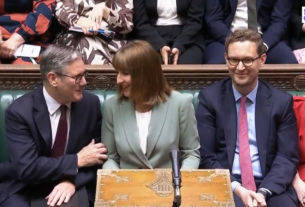Chancellor Rachel Reeves has unveiled a sweeping £725 billion, 10-year infrastructure strategy designed to transform key sectors of the UK economy, including transport, housing, and energy. Announced as part of a broader government spending review, the plan signals a long-term commitment to addressing persistent weaknesses in national infrastructure and stimulating economic growth.
A central component of the strategy is a major investment in transport and connectivity. This includes a £590 million contribution to the Lower Thames Crossing, a £9 billion project aimed at relieving congestion on the overburdened Dartford section of the M25 by constructing a new tunnel beneath the River Thames. In addition, a £1 billion “structures fund” will be established to repair and maintain aging bridges and tunnels across the country, improving safety and reliability in vital transport networks.
The plan also tackles the UK’s ongoing housing crisis, with £39 billion set aside to build 1.5 million new affordable and social homes over the next decade. This marks the most significant investment in social housing in half a century and aims to increase home availability for low- and middle-income families. By boosting housing supply, the government hopes to ease pressures in the rental market and support community development.
In the energy and environmental sector, the strategy includes initiatives such as new reservoir construction to improve water resilience, the expansion of electric vehicle charging infrastructure, and increased support for renewable energy projects. These measures are intended to bolster the UK’s climate commitments and reduce long-term environmental risk, while creating green jobs and encouraging private sector innovation.
To fund the plan, the government will reform pension fund investment rules. By pooling local government pension schemes into large-scale “mega funds,” up to £80 billion could be unlocked to finance infrastructure projects. This approach aims to reduce reliance on traditional public borrowing while harnessing domestic capital for national development.
Despite widespread recognition of the plan’s ambition, some critics have raised concerns about its feasibility. Industry observers and opposition politicians argue that the strategy relies heavily on uncertain private finance and may be constrained by existing budget pressures. Others question whether such large-scale projects can be delivered in time to benefit the current government before the next election.
Nonetheless, Chancellor Reeves insists the plan represents a bold step forward in building a modern, resilient UK economy fit for the future.




